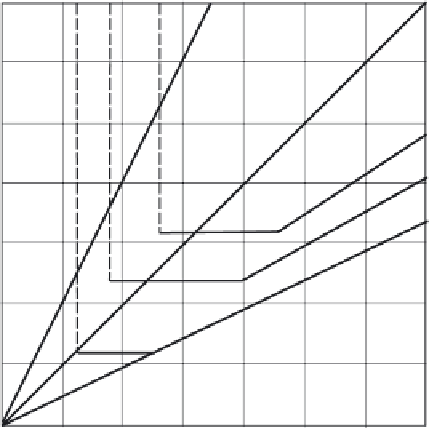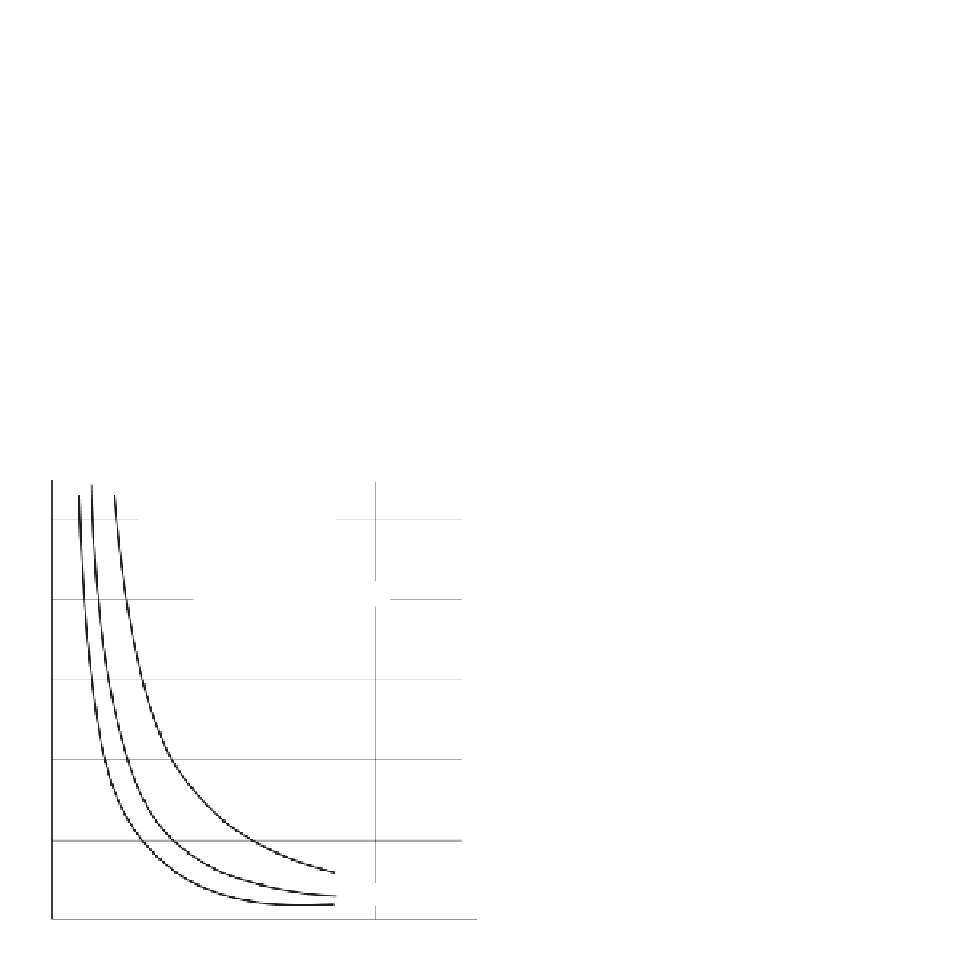Environmental Engineering Reference
In-Depth Information
1.5% swelling potential
5
5% swelling potential
25% swelling potential
4
Very high
3
Vermiculite (16)
2
High
FIGURE 10.41
Classification chart for swelling potential.
(After Seed, H.B. et al.,
Proc. ASCE J. Soil
Mech. Found. Eng. Div.,
88, 1962. With
permission. From Basu, R. and
Arulanandan, K.,
Proceedings of the 3rd
International Conference on Expensive Soils,
Haifa, Israel,
1973.)
Medium
Illite
01PB
6
1
3SC
Low
2,12
7
11
13
9
Hydrite R
1
15
0
0
20
40
Percent finer than 0.002 mm
60
80
100
70
60
50
40
Very
high
30
High
20
Medium
10
Low
0
FIGURE 10.42
Proposed modified chart for determining
expansiveness of soils. (From Williams,
A.A. and Donaldson, G. W.,
Proceedings of
the 4th International Conference on Expansive
Soils
, Denver, Colorado, Vol. II, 1980,
pp. 834-844. With permission.) The Table
is after Van der Merwe U.H.,
Proceedings of
the 6th Regional Conference for Africa on Soil
Mechanics and Foundation Engineering
,
Durban, Vol. 2, 1975, pp. 166-167.
0
10 20
Clay fraction of whole sample (%<2
µ
m)
30
40
50
60
70
Potential expansiveness
Inch per foot of soil
Very high
High
Medium
Low
1.0
0.5
0.25
0
Laboratory Tests
Tests in the laboratory on undisturbed samples trimmed into the consolidometer will
provide an indication of potential heave and the swelling pressures that may develop
(see
Section 3.5.4).










